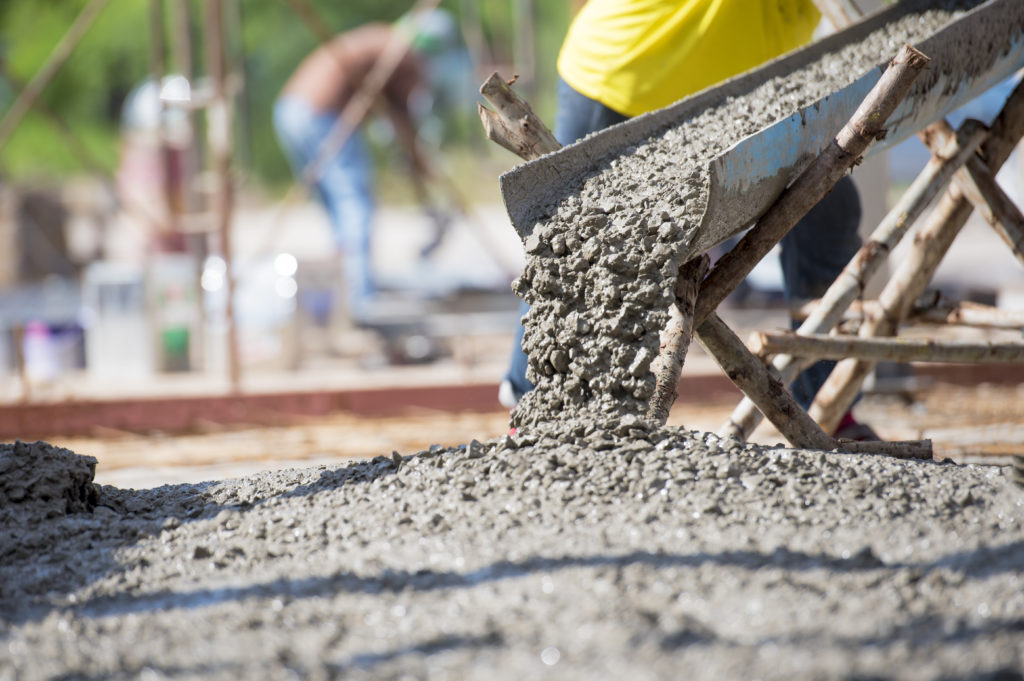Hot Weather Concreting
Hot weather concreting problems are most often encountered in the summer; however, any condition that increases curing rates and strips the concrete of moisture is considered hot weather concreting.
Pouring Concrete in Hot Weather
With temperatures rising and summer approaching, attentions shift from protecting concrete from the cold to concreting in hot conditions. When pouring concrete in hot weather, special procedures should be followed for proper mixing, placing, finishing, and curing. High ambient temperatures, high concrete temperatures, low relative humidity, and/or high winds impair the quality of freshly mixed and recently placed concrete (Hot). Pouring concrete in hot weather affects laboratory test results, showing that higher temperatures affect the compressive strength gain of hardened concrete. Even though concrete poured in hot weather will produce higher early strength but as time goes by, the ultimate strength will be lower than expected (Rodriguez).
Water Loss
Hot weather concreting causes increased setting rates and rapid water loss. Shrinkage and cracking are usually associated with hot windy weather. The major side effect of faster curing and water loss is decreased overall concrete strength. It is critical to prevent moisture from evaporating from the concrete surface. The evaporation rate removes surface water necessary for hydration , and thermal cracking may result from rapid changes in temperature, ie. pouring concrete on a hot day followed by a cool night (CIP 12). Proper mix design can compensate for these conditions, and in combination with protective measures to prevent rapid evaporation, quality concrete can be poured in hot temperatures (Rodriquez).
Adding water can increase concrete workability. However, adding water beyond the amount required by the approved mix design increases the water to cement ratio. This, in turn, can result in decreased compressive strength and an increased chance of cracking (Hot).
Recommendations for Hot Weather Concreting
Preparation is key and there are several basic precautions that can reduce the damaging effects of hot weather on concrete:
- Use mix designs that are less susceptible to the effects of hot weather. The use of low-heat-of-hydration cement and certain admixtures (such as hydration retarding and/or water-reducing admixtures) are two standard approaches.
- Keep concrete as cool as reasonably possible. ACI 305R does not state a maximum “as-placed” or “as-delivered” concrete temperature, but 90° F is commonly used. Substituting chilled water or shaved ice for a portion of the required mix water can help.
- Limit the amount of time between loading the concrete at the plant and placement/finishing at the site.
- Limit water addition at the job site, except to adjust slump upon arrival (when permitted by mix design).
- Avoid or limit hydration accelerating admixture use.
- Schedule large concrete pours in the early morning or evening when temperatures are cooler and have the manpower available to complete the job as quickly as possible.
- Use temporary wind screens and water misting nozzles to reduce surface moisture loss (Hot).
- Consider using a concrete cooling blanket to both retain moisture and protect the concrete’s surface from high ambient temperatures.
Powerblanket ICE Concrete Cooling
Powerblanket ICE® is portable cooling equipment that will keep newly poured concrete safe from heat. Portable, insulated, and efficient, Powerblanket ICE effectively regulates the temperature of concrete under both regular and hot conditions.
The Powerblanket Ice Circulation Blanket is combined with either a cooler or chiller to achieve optimum results. The Circulation Blanket draws heat to the blanket while also cooling the concrete.
- Blankets use Powerblanket’s patented heat-spreading technology in reverse–the cooling blanket draws heat away from the drum and lowers the temperature of the concrete.
- Blanket cover and insulation are the same as the robust system used in the Powerblanket heating products
- Powerblanket Ice industrial cooling systems are portable (120VAC required)
- Control the curing speed of newly poured concrete even in hot conditions
Works Cited
“CIP 12 Hot Weather Concreting”. NRMCA. 5 May 2017. https://www.nrmca.org/
“Hot Weather Concrete”. Engineering Consulting Services. 5 May 2017. https://www.ecslimited.com/blog/hot-weather-concrete
Rodriguez, Juan. “Pouring Concrete in Hot Weather: Tips and Tricks”. The Balance. 5 May 2017.
https://www.thebalancesmb.com/pouring-concrete-in-hot-weather-845030
Cure your concrete faster and better in cold weather conditions with Powerblanket.



